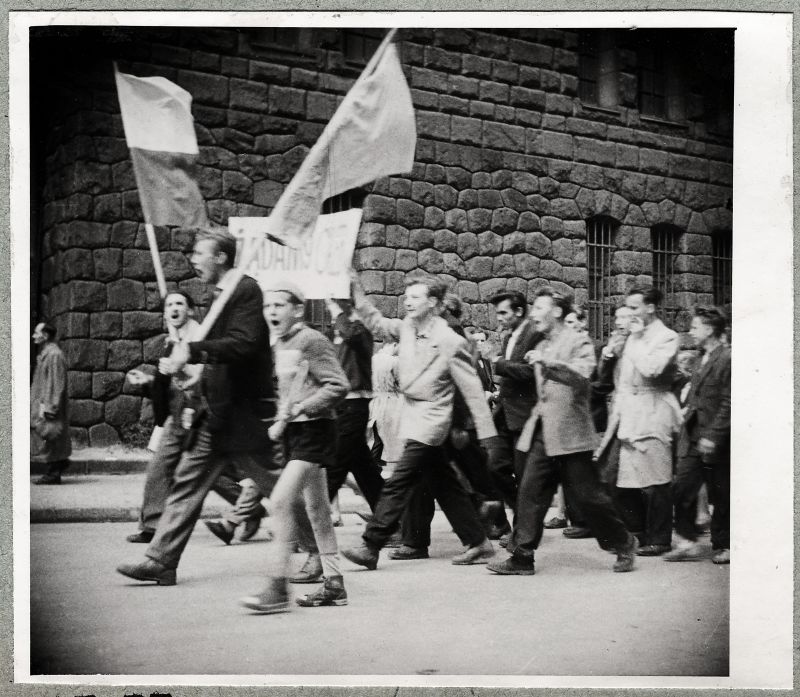The geopolitical situation of the eastern bloc, at the time of the so-called thaws, caused the Poznan manifestation to gain international interest immediately, gathering the attention of the most important political cabinets on both sides of the iron curtain. Therefore, it was not surprising that between June and July 1956 everyone wanted to get more information about “Poznan” which soon flowed to the desks of the leaders of the world’s greatest powers and their lesser acolytes interested in Poland’s situation.
Literature of the Poznań protests of June 1956
In the rich library of the Poznan protests of June 1956 we will find a number of works illustrating the direct reactions to the manifestations formulated by various countries (by their administrative institutions, diplomatic facilities, parliamentary chambers etc.), at the forums of international organisations (i.e. NATO), by political parties, union boards or press agencies. One such example would be the fundamental monography Paris, London and Washington look at October 1956 in Poland, written by the precursor of such research on Polish grounds – prof. Marcin Kula. On the side note, it should be added that this historiographical “treasure”, with only a few fragmentary exceptions, concerns analogical research conducted in regards of the countries of the eastern bloc neighbouring Poland, with a special consideration of the USSR.
Informative role of the secret services
While describing the international discussion caused by the Poznan protests of June 1956, the question should be asked about the role of the secret services working for individual countries directly interested in the knowledge of “Poznan”. As much as it is improbable to make a breakthrough in this regard in the context of the Soviet archives, it is a different case with their American counterparts. All due to the program resulting from the Freedom of Information Act, under which the American CIA systematically declassifies, digitalises and publishes on its digital library (https://www.cia.gov/library/) selective materials from the Cold War. What is significant, is the fact that while digging through the large collections of the documents with some key words, it is very easy to find the CIA’s files directly connected with the Poznan protests of June 1956.
